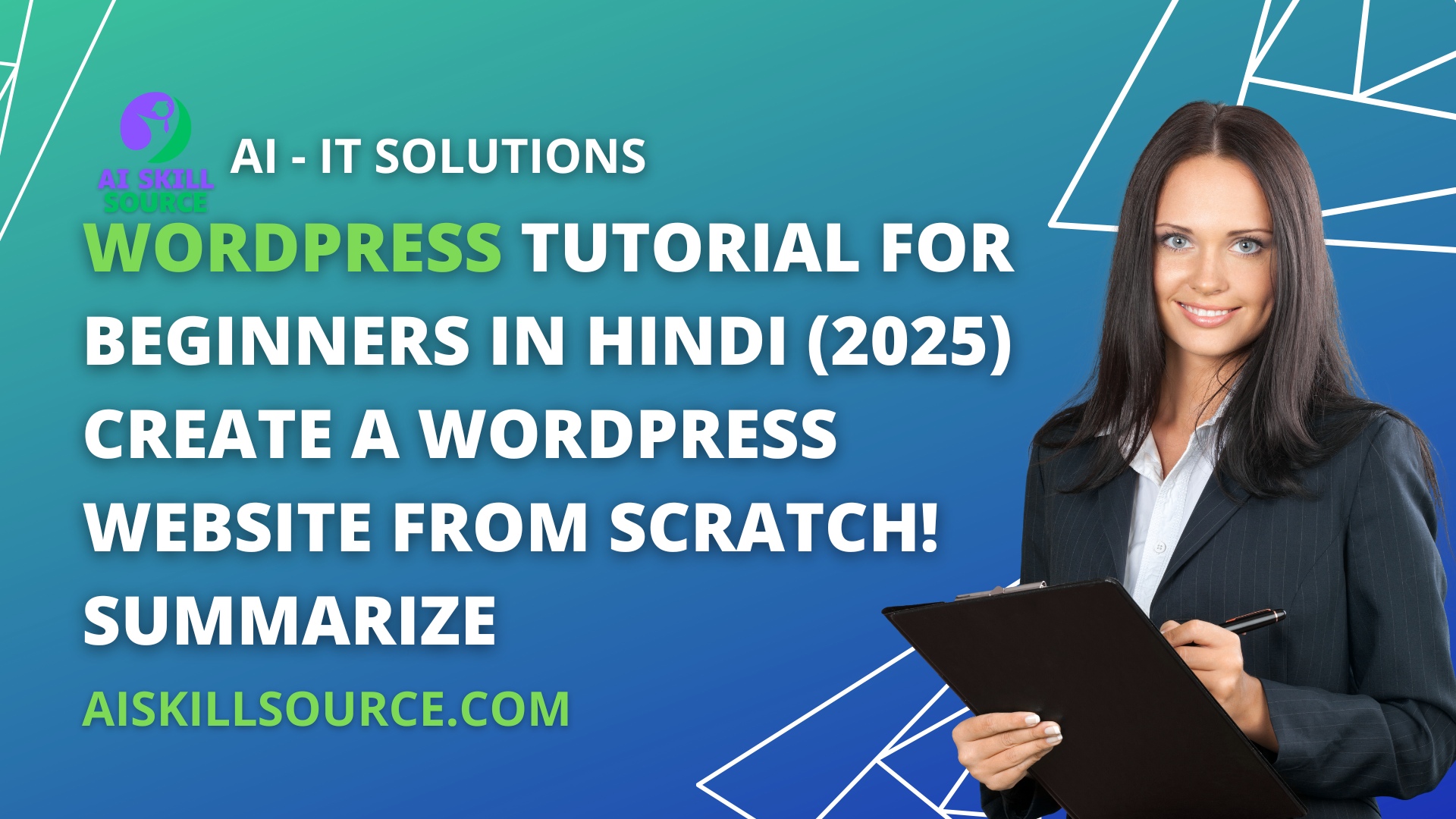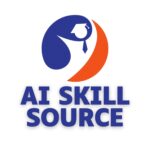
Introduction to Agile Strategy and Educational Design
Educational design is a course that includes the systematic growth of studying and educating. The tactic consists of categorizing educational content material, breaking it down into manageable segments, after which designing studying experiences that acquire information and expertise extra environment-friendly, efficient, and fascinating. This subject has considerably advanced during the last several years, with new theories and applied sciences rising at a speedy tempo, prompting the necessity for up-to-date and progressive methodologies.
One such methodology that has taken the company and training sectors by storm is the ‘Agile’ strategy. Impressed by the world of software program growth, the Agile strategy champions adaptability, speedy prototyping, and steady enhancement. The Agile strategies embrace change, permitting practitioners to stay versatile and aware of altering wants or unexpected challenges. The Agile ethos holds the usually understated view that studying is a messy and sophisticated phenomenon and designing instruction ought to mirror this actuality.
The Agile strategy includes iterative processes characterized by the incremental supply of working educational design to supply demonstrable worth quicker. Agile encourages fixed suggestions that allow designers to regulate the course based mostly on the entry In its essence, this strategy values collaboration over silos, functioning options over complete documentation, customer-centered designs over cookie-cutter fashion,s and adaptableness over sticking to predefined plans.
By implementing the Agile strategy to educational design, the goal is to shift from a linear, prolonged, and infrequently inflexible design mannequin in the direction of an extra dynamic, adaptable, and student-centered design framework. This enables an educational design the place educators can reply rapidly and successfully to learners’ wants, targets, and studying types.
For this text, we can delve into the rules of the Agile methodology, its implementation in educational design, and the benefits and challenges of the strategy, in addition to current case research showcasing success tales of Agile in educational design. It additionally will focus on progressive instruments that may help in implementation and future views within the subject of agility in educational design.
By integrating Agile rules into educational design, we hope to supply educators and educational designers with a strong toolkit that helps in creating studying experiences that are versatile, efficient, and fulfilling for all concerned. That is the thrilling proposition of the Agile strategy – its potential to reshape and redefine the best way instruction is designed and delivered in our quickly altering technological period.

The Rules of Agile Methodology
The Agile Methodology, initially conceived within the realm of software program growth, relies upon a set of values and rules that goal to advertise flexibility, collaboration, effectivity, and adaptableness. Understanding these rules is important to making use of the Agile Strategy successfully in any context, together with within the realm of educational design.
Firstly, Agile is rooted in the thought of iterative growth. This breaks the challenge into small manageable models permitting steady revision and adaptation. For example, in educational design, a course or coaching module might be broken down into a number of elements, every one of which is designed, examined, and revised individually.
The second precept revolves around embracing change. Conventional methodologies typically contain in-depth upfront planning and regard any deviation from this plan as detrimental. In distinction, Agile Methodology sees change as a daily and advantageous part of the method. In educational design, this may occasionally imply adjusting an ongoing course based mostly on learner suggestions or altering market calls.
Thirdly, the Agile method emphasizes the significance of collaboration between cross-functional groups. Communication between totally different stakeholders is inspired, making certain everybody has shared understandings and targets. For educational designers, this implies frequent interplay with subject material consultants, instructors, and learners themselves.
One other precept is to give attention to delivering operational options promptly. Agile encourages working briefly, manageable cycles, referred to as “sprints,” to ship functioning merchandise after every dash. That is advantageous in educational design because it permits an early and steady supply of precious studying sections, which may be instantly carried out and evaluated.
An essential Agile precept is centered on sustainable growth. The Agile strategy promotes sustaining a gentle and sustainable tempo of labor, which may be adopted indefinitely. This could contribute considerably to taking care of the motivation and efficiency of the educational design group.
Agile additionally locations an ideal emphasis on simplicity. It encourages eliminating pointless processes or elements that don’t contribute to the specified final result. In educational design, this might imply simplifying course content material or educational supplies to make sure they effectively serve their meant studying outcomes.
The final precept value noting is that Agile values self-organizing groups. Groups are given the liberty to organise themselves which results in extra creativity and higher problem-solving skills. Within the context of educational design, empowering the design group to make selections can lead to simpler and customized studying experiences.
In conclusion, the rules of Agile Methodology provide a progressive and adaptive framework for challenge administration, which may be fairly fruitful when utilized in educational design. They spotlight the necessity for an adaptable, succinct, and iterative strategy that enhances group collaboration and prioritizes learners’ wants. These rules not solely permit educational designers to rapidly reply to modifications but additionally end in making a simpler and fascinating studying surroundings.

Implementing Agile in Educational Design
Implementing Agile in educational design requires an elementary shift within the strategy in the direction of curriculum growth, collaboration, and fixed iteration. The emphasis is on flexibility, adaptability, and steady changes based mostly on responses from the learners or the altering studying wants.
To start with, Agile’s learner-centric strategy pushes the normal boundaries of an educational design. As an alternative to a sequential, linear technique of defining every little thing upfront, Agile works finest by way of incremental and iterative motion permitting educational designers to constantly take a look at, refine, and adapt. The event course of turns into extra cyclical, permitting the curriculum to evolve with every iteration based mostly on suggestions, testing, and evaluation.
A key first step is to outline the general studying outcomes and targets of the course, preserving them as versatile and adaptable. This versatile design technique permits trainers to regulate their education type and strategies in line with the learners’ wants and their studying progress.
One hallmark of Agile is the ‘dash’ – a cycle of quick, repeated work durations. In an educational design context, this might seek advice from designing a selected module or a lesson inside a brief timeframe, permitting fast testing and quick suggestions. This ‘dash’ strategy permits fast prototyping and the capability to check studying supplies earlier than committing to a whole course.
Collaboration is one other cornerstone of Agile methodology. It requires a cross-functional group consisting of content material consultants, educational designers, and builders who work collaboratively and make selections collectively. Common communication, synchronized duties, shared understanding, and customary function are essential for the fulfillment of this mannequin. It additionally consists of involving learners for suggestions at each stage of content material growth for real-time enhancements.
To facilitate speedy growth and collaboration, quite a lot of Agile instruments can be utilized similar to on-line collaborative platforms, challenge administration instruments, and digital storyboard software programs. These instruments allow transparency and streamline duties, making it straightforward to handle complicated educational design initiatives.
Assessments additionally play an essential position in an Agile studying surroundings. Frequent and different assessments present alternatives for learners to display their understanding and expertise and for instructors to refine the curriculum and regulate the tempo.
Embracing Agile in educational design requires a major shift in mindset and a willingness to let go of conventional strategies. But it surely’s this flexibility, responsiveness, and adaptability that may result in simpler and environment-friendly studying surroundings. By specializing in learners and being open to steady refinement and adaptation, educational designers can create participating, related, and efficient studying experiences. Whereas it could appear difficult to begin, do not forget that, like Agile itself, implementing it is also an iterative course.
In conclusion, implementing Agile in educational design would possibly initially appear a frightening job, however, when you begin dipping your toes into it, you realize it’s about taking small steps at a quicker tempo. It’s about prototyping, getting quick suggestions, and bettering in real-time – all with transparent attention to the learner. It’s a leap of religion that has demonstrated exceptional outcomes throughout the globe. So, embrace the change, go Agile!

Benefits of Agile Strategy in Educational Design
The Agile strategy brings quite a few benefits to educational design, considerably bettering efficacy and effectiveness. Right here we try to spotlight a couple of key advantages.
One of the many main benefits is its adaptability. An Agile surrounding embraces change and permits educational design to develop iteratively, reacting promptly to altered circumstances, up-to-date content material, or modifications in learners’ reactions. This dynamic planning presents a excessive diploma of flexibility, in contrast to conventional fashions with inflexible buildings.
Progress may be assessed effectively in the course of the growth course of utilizing the Agile strategy. Common check-ins or “Sprints” present alternatives for analysis and amendments, thus avoiding the perils of manufacturing an unlimited quantity of content material that will not meet the specified requirements or yield anticipated outcomes. This helps educational designers make sure that ultimate outputs are aligned with learner wants and expectations.
Agile gives attention to “People and interactions throughout and instruments” which means the strategy is extra receptive to human parts in challenge design. This implies extra consideration is positioned on consumer suggestions and collaborative interplay, enhancing the power of the course materials to interact with learners and create extra impactful instruction.
One other benefit of Agile is its emphasis on working software programs over complete documentation. In educational design, it is interpreted as giving precedence to the manufacturing and supply of small completed components of the challenge. The resultant early and frequent deliveries permit real-time suggestions from the learners and instructors, allowing iterative refining of content material earlier than delivering the ultimate product. This additionally results in higher useful resource administration and higher learner satisfaction.
One of the many essential benefits is threat mitigation. The common opinions permit for early detection and determination of potential points. In a conventional waterfall mannequin, such issues won’t floor till the ultimate stage, resulting in hefty alterations that require important time and resources.
Lastly, the Agile strategy encourages stakeholder involvement – together with learners, instructors, organizations, and subject material consultants. The excessive degree of involvement creates a way of possession and promotes collective decision-making. This fosters simpler, environment-friendly, and rewarding working surroundings.
It must be famous, nonetheless, that the Agile strategy shouldn’t be a silver bullet for all educational design wants. Its implementation wants adaptability, dedication, and a cultural shift from conventional strategies. This may occasionally appear difficult, however as soon as adopted, the Agile strategy can considerably reshape and improve educational design methodologies.

Challenges in Adopting an Agile Strategy in Educational Design
Adopting an agile strategy in educational design, regardless of its advantages, presents challenges that establishments, interdepartmental groups, and educators should acknowledge and tackle. Understanding these challenges is essential to efficiently implementing an agile strategy and maximizing its potential advantages.
One of many important challenges is tradition change. Agile strategy interprets a considerable shift from conventional strategies. It includes collaborative resolution-making, iterative growth, and suppleness that conventional environments might initially resist, particularly if hierarchical buildings are prevalent. This may occasionally necessitate cultural and ideological shifts within the group that transcend simply altering work processes.
The second problem is communication. Agile educational design requires sturdy and frequent interplay between all stakeholders, together with educators, designers, and learners. Sustaining common contact and making certain that everybody has the newest info may be daunting. The necessity for clear, concise, and efficient communication is underscored extremely as a result of the iterative nature of agile design, the place procedures are recurrently revised and improved.
Time constraints typically pose one other problem. Agile educational designs create content material in small, iterative steps and require fixed suggestions and revision, creating an impression of a time-consuming course. Conventional educational design fashions, such as the ADDIE mannequin, are seen as extra structured and time-bound, inflicting apprehension about Agile’s effectiveness.
As well as, there may be resistance from educators and designers, particularly those accustomed to well-structured, linear fashions of educational design. The agile strategy’s fluid and interactive nature might be a supply of confusion and reluctance for some educators; this highlights the necessity for thorough coaching and orientation classes.
The requirement of extremely expert group members is one other stumbling block. Agile instruction design calls for more than information about the subject material; it requires an understanding of academic theories, technical expertise to create and modify digital content material, and challenge administration expertise to handle the frequent iterations of the event course.
Lastly, whereas suggestions in an agile mannequin are supposed to enhance studying, they may additionally enhance the potential for confusion or battle. Dealing with destructive or conflicting suggestions requires tact and talent, lest it impression group morale and the challenge’s momentum.
Regardless of these challenges, the advantages of an agile strategy to educational design, similar to flexibility and responsiveness to learners’ wants, make it worthy of consideration. Recognizing these challenges ought to encourage educators and establishments to plot acceptable methods, which could contain coaching, organizational large tradition shift, or bettering communication channels, to facilitate the sleek adoption of an agile strategy. Keep in mind, that each problem typically entails a chance for studying and progress. Certainly, innovation comes from overcoming such hurdles, making us extra agile within the true spirit of the ideology.
Case Research: Profitable Examples of Agile in Educational Design
Over the previous years, several establishments have efficiently adopted the Agile strategy in educational design with extremely encouraging outcomes. This chapter explores two such case research – one from the company sector and one other from the training sector – to spotlight the sensible software and deserves of this technique.
The primary case includes a world software program company, going through the problem of quickly up-skilling its workforce as a result of fast-paced tech developments. With staff unfolding worldwide, delivering conventional classroom-based coaching wasn’t possible. The corporation adopted an Agile strategy to create a versatile, digital studying platform. Agile allowed the design group to work iteratively, recurrently producing usable content material and constantly getting suggestions from staff. This methodology facilitated a user-focused design, enhancing learner engagement and making certain of the platform’s usefulness. Over time, the platform advanced right into a repository of bite-sized studying modules, accessible to staff anytime, wherever. The Agile strategy in this educational design offered a technique to bridge studying gaps in real-time and hold tempo with business modifications.
Within the training sector, a properly reputed college additionally efficiently carried out agile educational design. The problem was to design a web-based Grasp program that catered to the different studying wants of various, geographically dispersed pupil inhabitants. The design group, comprising of school, educational technologists, and pupil representatives, adopted an Agile mannequin. They took an iterative strategy, creating course modules in cycles. Every cycle concerned designing, implementing, reviewing, and refining modules based mostly on pupil suggestions. This strategy supplied ample alternatives for suggestions and high-quality enhancement, making certain of the course’s relevance and effectiveness. The Agile design allowed the college to ship a dynamic, student-centric online program, preserving tempo with the ever-changing academic panorama.
This research didisplaythat shat Agile shouldn’t be confined to a selected business or sort of studying. Its underlying rules and methods make it a strong device for educational design in different settings. The experiences of those organizations underscore that an Agile strategy may help to design studying experiences that are interactive, versatile, and targeted to the particular wants of learners, considerably enhancing studying outcomes. Keep in mind, that adopting Agile is a cultural shift and requires endurance, adaptability, and absolute involvement of related stakeholders. Nevertheless, as soon as carried out, it proves to be a transformative device for educating and studying. Within the upcoming part, we’ll discover some progressive instruments that may additionally assist this Agile transformation in educational design.
Revolutionary Instruments for Agile Educational Design
Revolutionary instruments are pivotal in optimizing the Agile course of educational design. These instruments assist in streamlining processes, fostering collaboration, and maximizing effectiveness. Listed below are a couple of key instruments that may revolutionize the best way educational designers work.
1. Job Boards: Interactive job boards are nice instruments for preserving observation of progress in actual time. They permit educational designers to visually categorize work into ‘to do’, ‘in progress’, and ‘finished’ piles. Instruments like Trello, Asana, and JIRA are broadly used for this function and tremendously assist agile challenge administration.
2. Collaboration Instruments: Distant collaboration is important in Agile initiatives. Platforms similar to Microsoft Groups and Slack permit group members to speak effectively, eliminating the boundaries of location. Doc-sharing instruments like Google Suite or Dropbox additionally facilitate real-time collaboration and suggestions.
3. Speedy Prototyping Instruments: These are significantly helpful in educational design for producing a fast impression of the ultimate product. They create an iterative studying design making certain well-timed suggestions and enhancements. Adobe XD, Sketch, and InVision are a couple of generally used prototyping instruments.
4. Digital Interactive Whiteboards: Instruments like MURAL and Miro provide digital, collaborative whiteboards. These permit the groups to return collectively to brainstorm, sketch, share concepts, and plan their challenge visually, which is essential in agile processes.
5. Studying Administration Programs (LMS): An integral part of any educational design challenge, the proper LMS could make the Agile strategy simpler to handle and execute. Canvas, Moodle, and Blackboard are a couple of fashionable LMSs used.
6. Suggestions Instruments: Instruments that facilitate fast iterative suggestions may be very helpful. It may be as simple as Google Kinds for gathering suggestions or extra specialized instruments like UserTesting for wealthy, detailed consumer suggestions.
7. Time monitoring instruments: Agile educational design is all about pace and effectivity, and monitoring time precisely is a key success issue. Instruments like Harvest, Toggl, and Well timed may help hold observation of the place the group’s time goes.
All these instruments have their strengths and challenges, and the collection of an acceptable device must be performed based mostly on the particular necessities of the course, college students, academics, and different stakeholders concerned. It’s not all the time about having the costliest or superior device however somewhat, the one that matches finest with the challenge’s wants and enhances the productiveness of the group.
By means of steady exploration and mastering of those progressive instruments, educational designers can actually leverage the facility of the Agile methodology to create efficient and fascinating studying experiences.
Future Views: Agility in Educational Design
The dynamic nature of the digital world is shaping the necessity for extra versatile, adaptive, and responsive educational design methodologies. As we’ve explored all through this text, Agile’s effect on educational design is making waves, disrupting conventional fashions, and paving the best way for a future wherein our studying environments are as dynamic and responsive as the world around us.
Trying in the direction of the longer term, the potential for Agile in educational design is big. We can count on to see Agile methodologies deeply embedded in educational design, the place the main target is on steady enhancement, flexibility, and designing studying experiences that interact and encourage learners.
Within the coming years, we’re prone to witness a major transition from conventional, linear fashions of educational design to round, iterative Agile fashions. Designers and instructors might start to construct their curricula utilizing Agile frameworks, with common suggestion loops and iterative modifications carried out throughout the course.
Furthermore, the rising accessibility of applied sciences similar to digital actuality, synthetic intelligence, and superior analytics, is creating a wealth of alternatives for Agile educational design. For example, synthetic intelligence can present real-time suggestions to educators, serving to to information for the Agile design course. Equally, digital actuality can provide immersive and fascinating studying experiences, pushing the boundaries of what’s doable with Agile educational design.
Future developments additionally point out a shift in the direction of leaner, extra-focused studying modules designed utilizing Agile methodologies. These bite-size studying experiences, sometimes called microlearning, can be tailor-made to swimsuit people’s distinctive studying wants, somewhat than adopting a one-size-fits-all strategy. Utilizing Agile, these studying experiences may be designed, examined, and iteratively improved rapidly and successfully.
Nevertheless, with all its advantages, the adoption of Agile in educational design additionally presents quite a lot of challenges. For instance, shifting mindsets and altering longstanding practices may be troublesome, and coaching school and educational designers in Agile methodologies takes time and resources.
These challenges, though important, are usually not insurmountable, particularly when thought of in gentle of the potential advantages. Agile, with its inherent flexibility, responsiveness to alter, and emphasis on collaboration, may be an extremely highly effective device within the context of educational design.
Undoubtedly, Agile will play a major position in shaping the way forward for educational design. By embracing the Agile strategy, we can set up educating and studying experiences that are extra significant, participative, and efficient. As we proceed to discover, adapt, and study, the chances for Agile in educational design are countless. Agile methodologies can revolutionize the best way we design and ship studying experiences, setting the stage for a future wherein training is as dynamic, adaptable, and responsive as the world wherein we stay.
……………….
BSB UNIVERSITY LEARN AND EARN AISKILLSOURCE.COM










